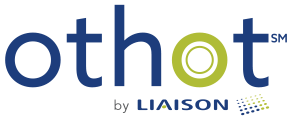The Missing Ingredient in Strategic Enrollment, Today

Traci Roble
Our collective experience in higher education leadership spans 24 years across both campus and online populations. We have played instrumental roles in helping our respective institutions grow and achieve strategic enrollment goals, increase retention, and reduce institutional award spending, ultimately working to maximize student success, as well as university success.
Our titles ranged from Director of Admissions to Senior Director of Student Success to Regional Director of Career Services to Regional Vice President.
Our actual roles rarely encompassed the responsibility that came with being a leader in the education sector.
We stepped outside of our roles constantly to support our teams, and ultimately, our students. While our time in higher education was rewarding, it may also have left us with a few more gray hairs than before!
When we both joined Othot, it was interesting to share war stories from our respective universities and reflect on ways that we approached decision making and juggled our time in busy enrollment offices.
Decisions with Impact
As a general rule, we made decisions that aimed to increase enrollment while continuing to improve the student experience within our annual budgets. We’ve worked closely with educators and industry professionals alike and the same sentiment resounded:
There is only so much time in a day, use it wisely.
With that in mind, we always tried to focus on what could make the largest impact.
While every step of the student lifecycle presented an opportunity to make a bigger and better connection between student and university, it presented risks as well. Shaping an incoming class, maintaining academic standards, and achieving institutional goals (enrollment, retention, graduation, career placement, and alumni engagement) requires a lot of attention, expertise, people, and strategy.
Time Well Spent?
Much of our time was spent working to derive strategy from data we pulled out of our data management systems or in the analytics platforms that simply showed real-time data. Not to say that we couldn’t gain insights from this, but it took a lot of time.
Time that could have been better spent. Using historical data, we identified trends and forecasting models and worked to create digestible information to make an impact on incoming and current students.
We led discussions and meetings with our leadership teams about how to use the insights and how they may impact strategy and our goals. After we identified what we believed made impact and communicated it to our teams, the next step was translating that to potential and current students.
Who to call? What to do on that call?
What to send? Who to send it to?
How to get students to come to the campus?
Should we offer additional institutional aid? What amount?
The Missing Ingredient (Spoiler Alert: You already have it!)
However, we were missing true prioritization within specific groups of students and where to spend our time that would yield the greatest results.
As an example, we used the “increase institutional award” strategy more than once. We took a group of students that seemed to have a lower probability of attending and offered additional institutional awards to all of them. However, we did not see the results that we were expecting.
While we used data to help drive decisions and to measure the impact of those decisions, we were missing something.
The answers were within our data, but we didn’t have the data science to derive it or the platform to best see it.
Enter Othot
Working with the Othot team has been eye opening. We have spent some time looking back to our higher education experience thinking we wish, we would have, or we could have.
Looking forward, we are excited to partner with Othot customers to maximize the full potential of the Othot platform and help institutions quickly prioritize, strategize, and see results.
Chris Rose is a co-author of the post.

Traci Roble



